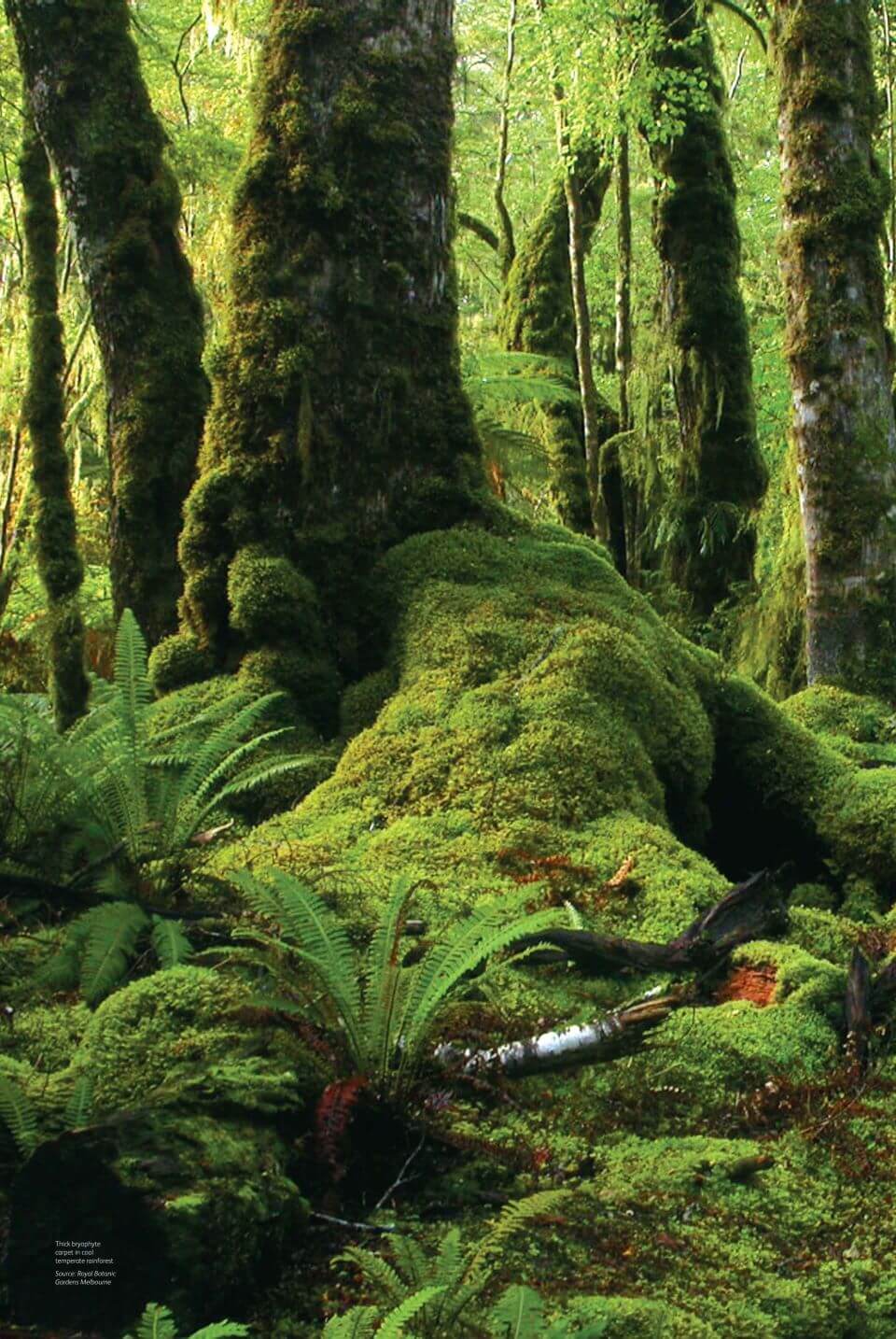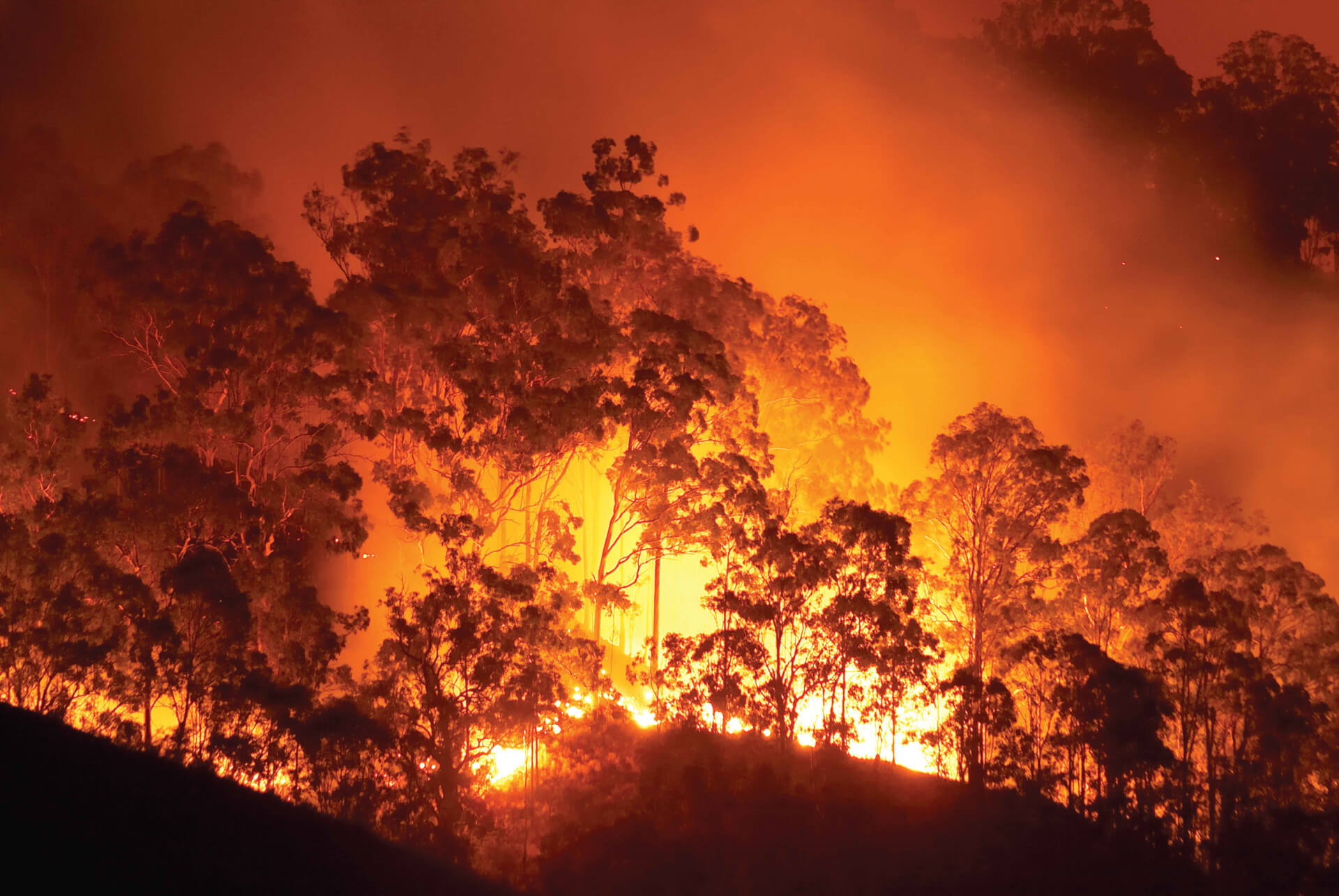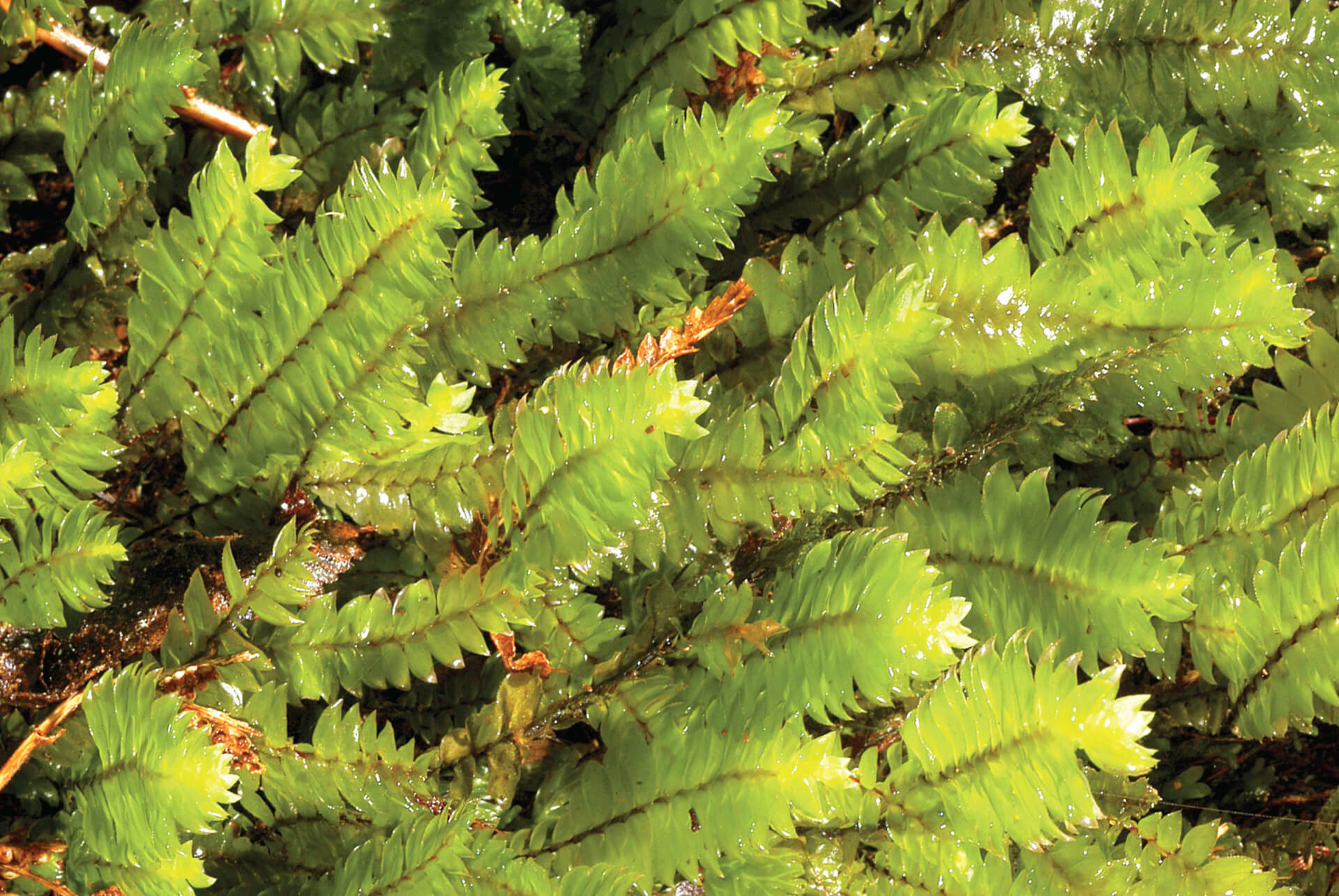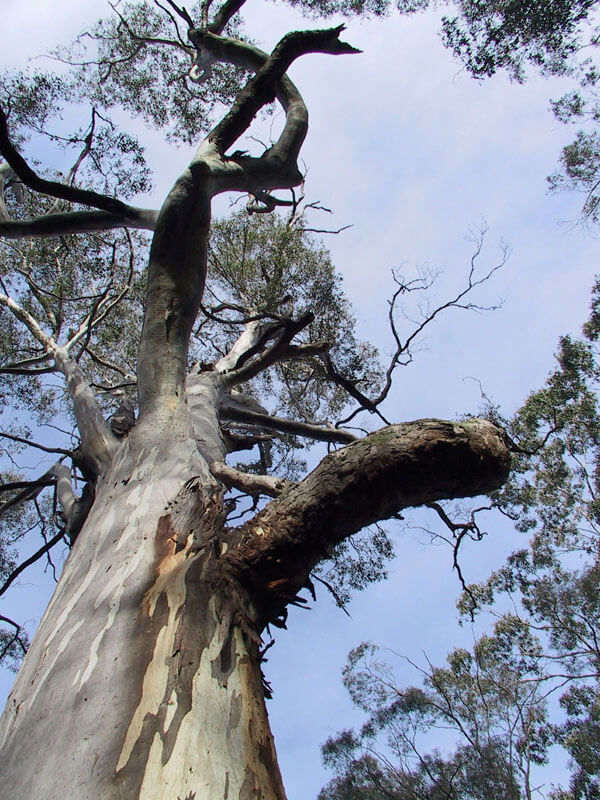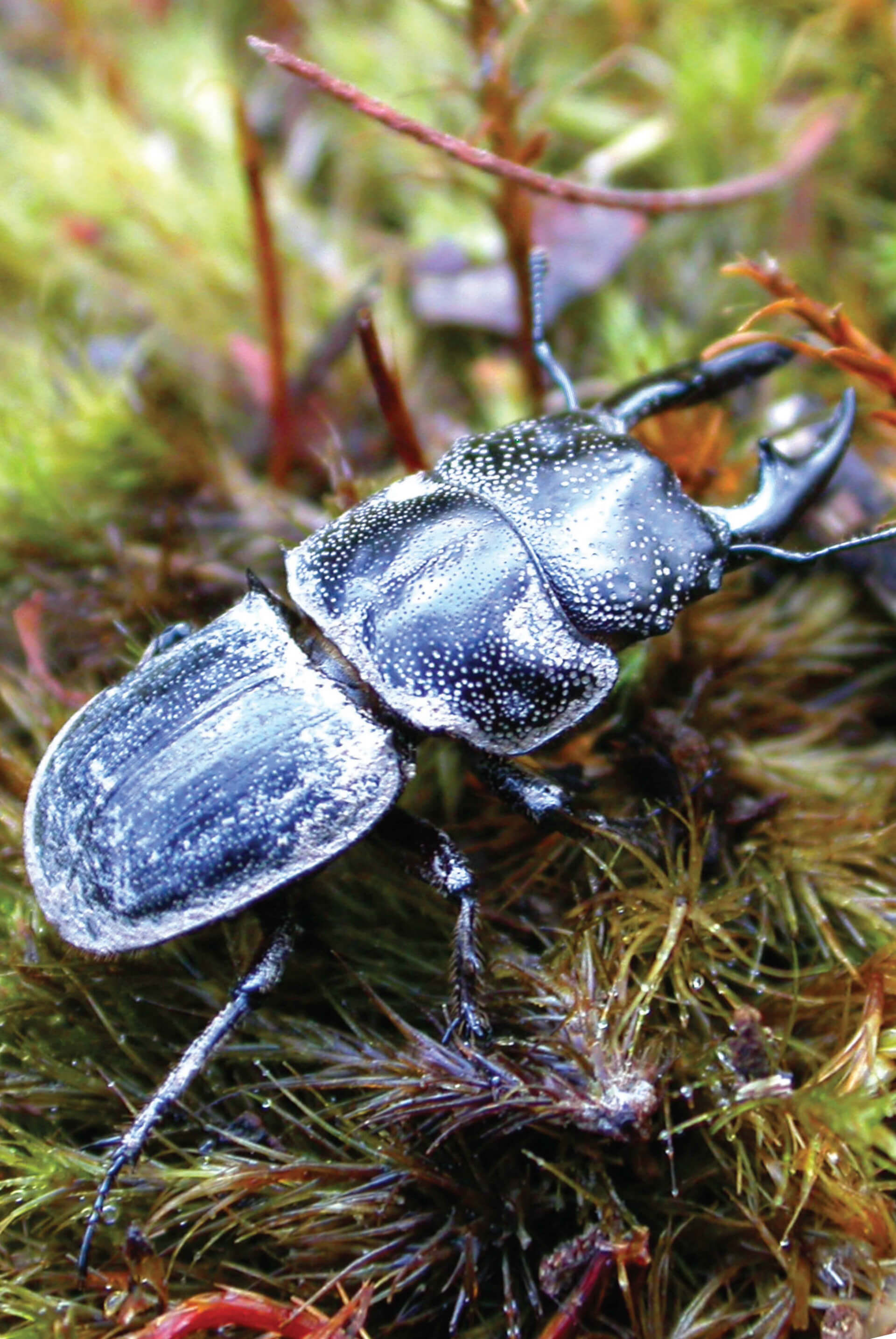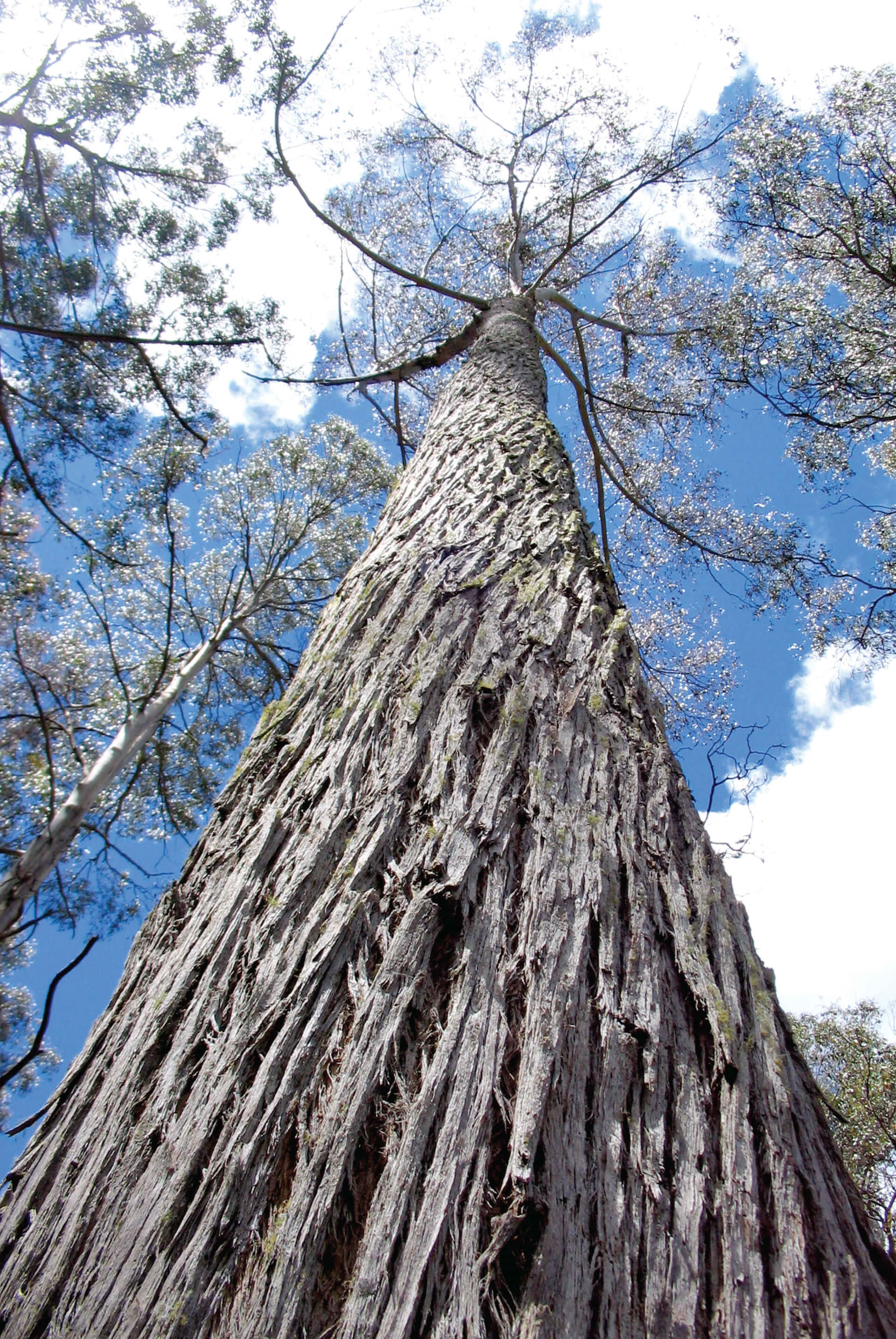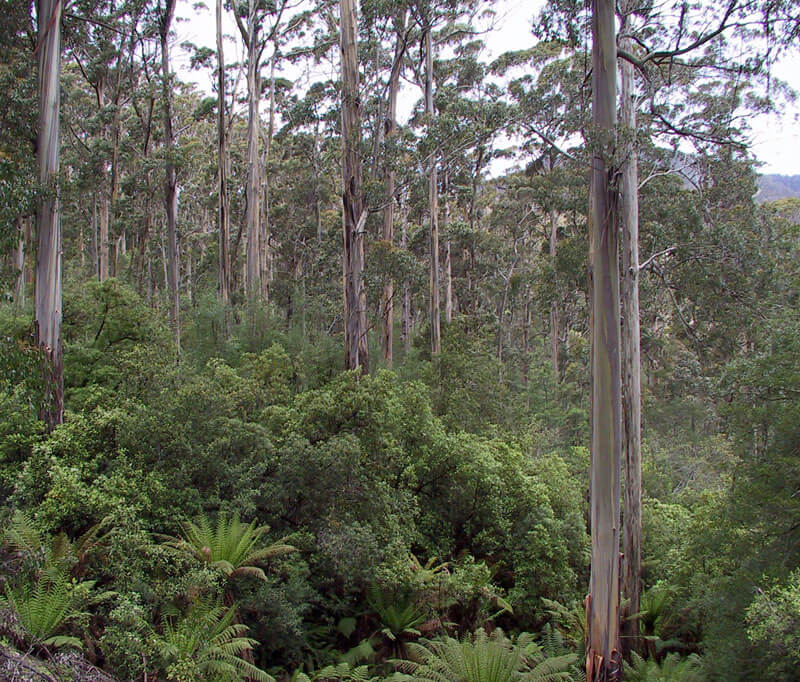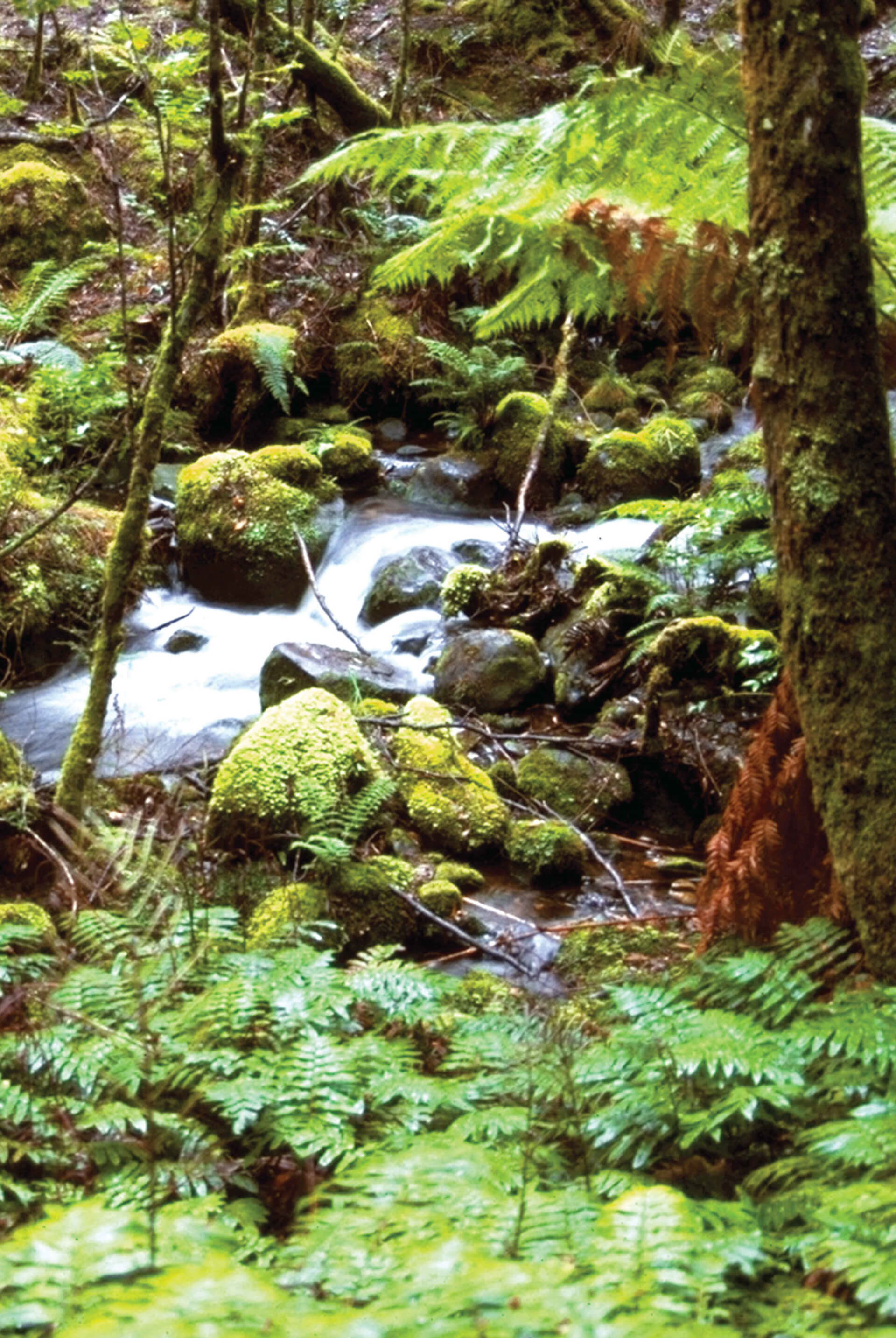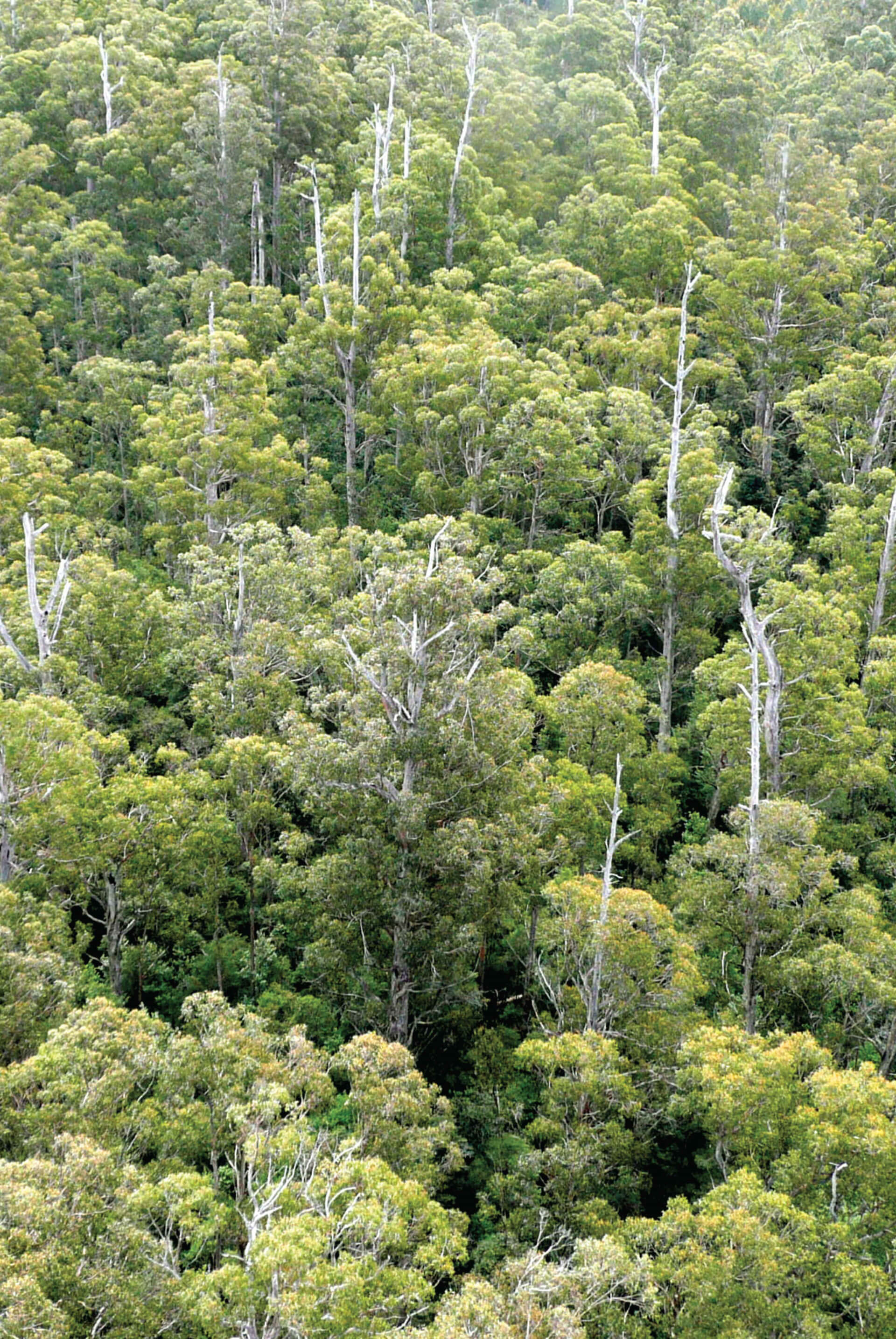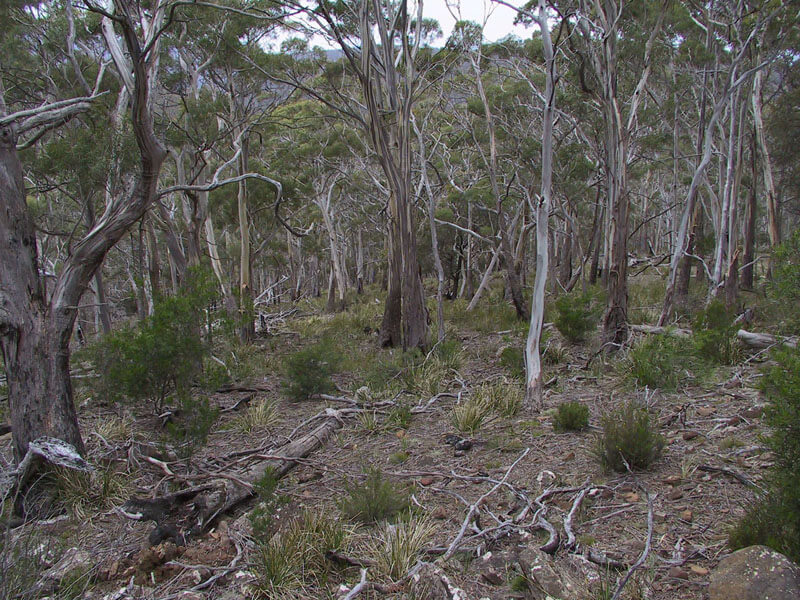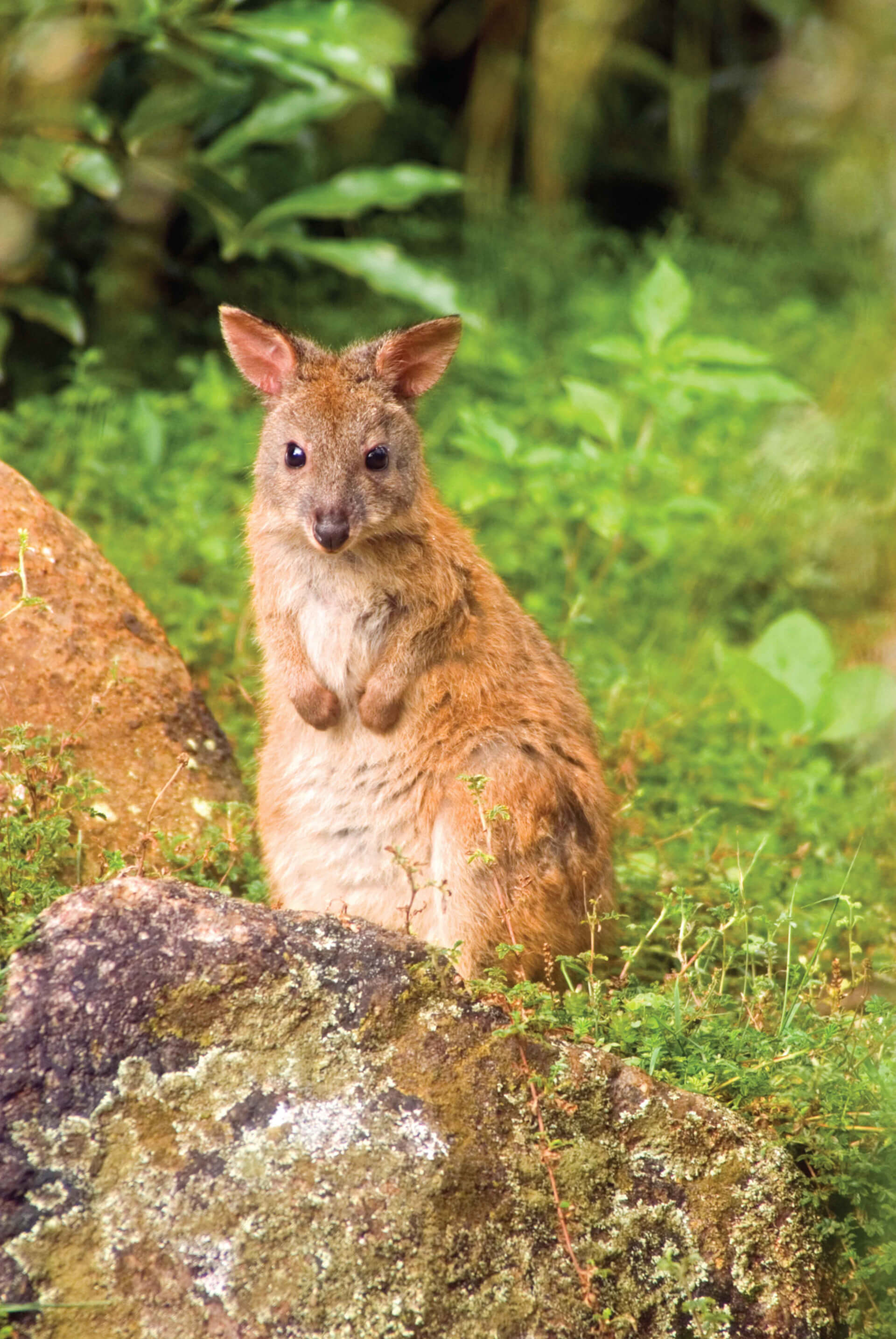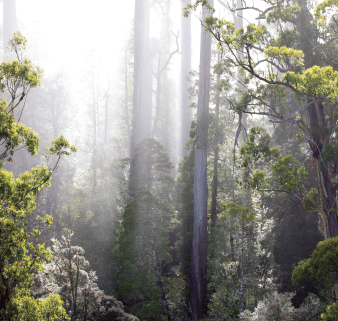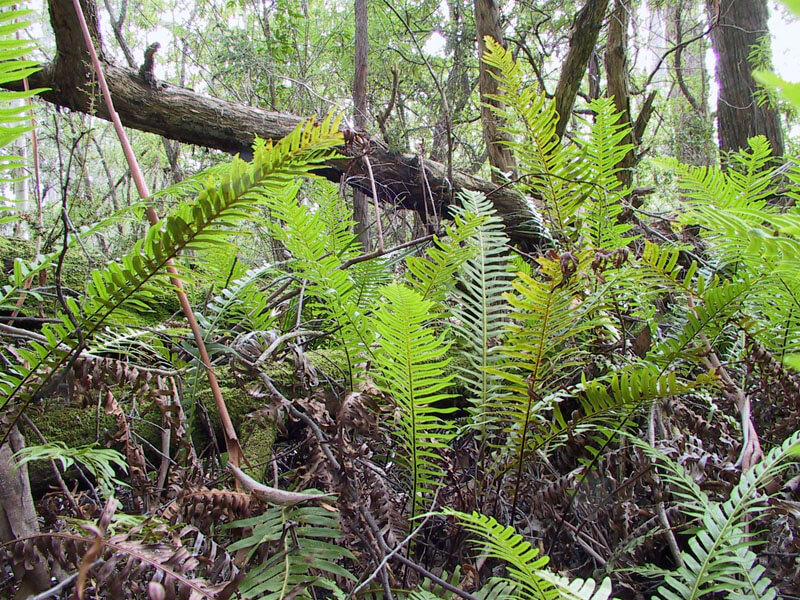What is a forest?
It’s a web of life – a dynamic, constantly changing community of living things – from the subsoil to the canopy, a forest is much more than its trees.
Forests play a vital role in sustaining the life forms and atmosphere of our planet. Forests provide a habitat for all the living things contained within them. Apart from trees, the forest is also made up of soil, water, other plants, animals, birds and insects. Many of these living things are dependent on other living things within the forest for their survival.
Forests are an integral part of nutrient cycles in our environment, ensuring that water, minerals, gases and trace elements stored in vegetation and the soil are recycled to maintain soil fertility. Forests play an important role in gas exchange (e.g. carbon, nitrogen and oxygen cycles) in our environment. Gas exchange cycles are crucial to the maintenance of our atmosphere.
Tasmania’s geology, climate, landforms and frequency and intensity of fires vary widely. These variations are reflected in patterns of plant growth which, besides forest, include dry and wet woodlands, alpine vegetation, native grasslands, buttongrass moorlands, wetlands and coastal communities such as heathlands. The term forest is usually only applied where trees exceed two metres in height and the canopy shades more than 20 per cent of the ground surface. Botanists have developed systems for describing differing forest structures within that broad grouping, taking into account things like the height of the tallest trees, area of canopy or overstorey, type of understorey, dominant species, and regeneration patterns. Tasmania has three main native forest types: cool temperate rainforest, wet eucalypt forest and dry sclerophyll forest, which grade into each other in environmental transition zones.

